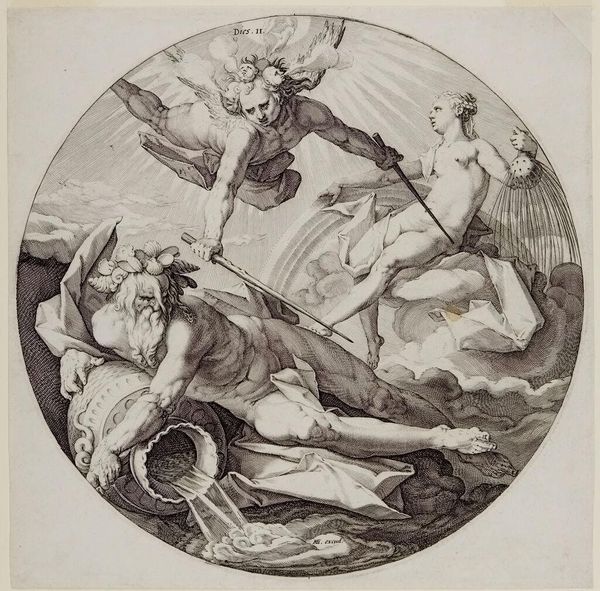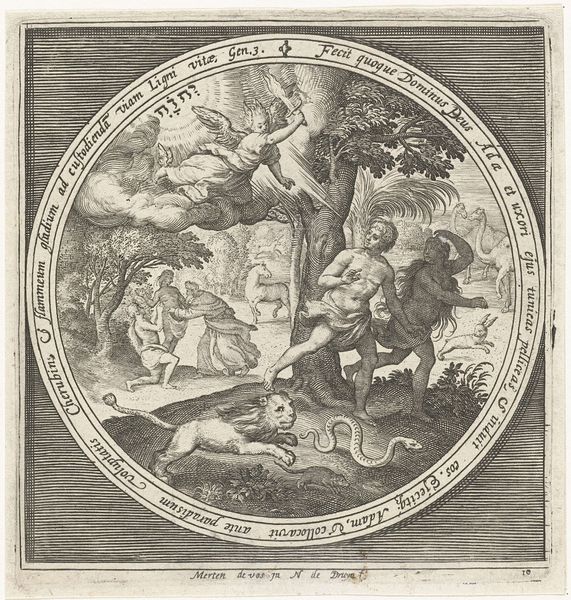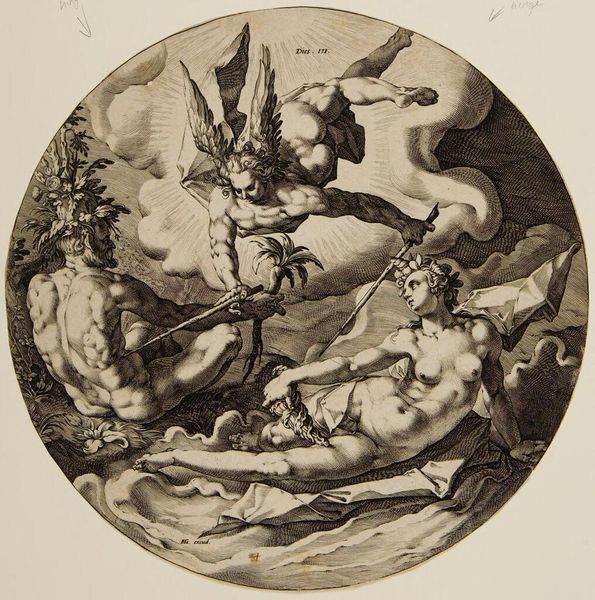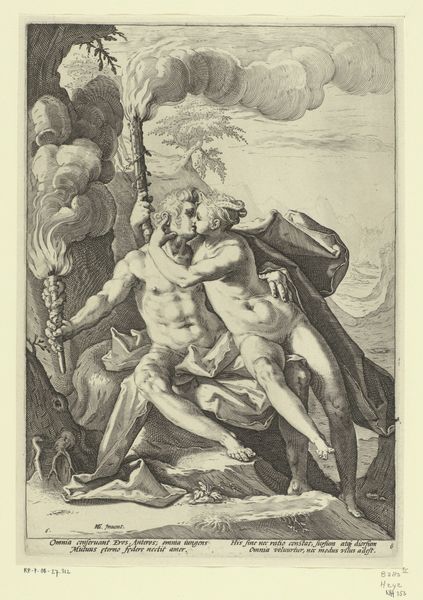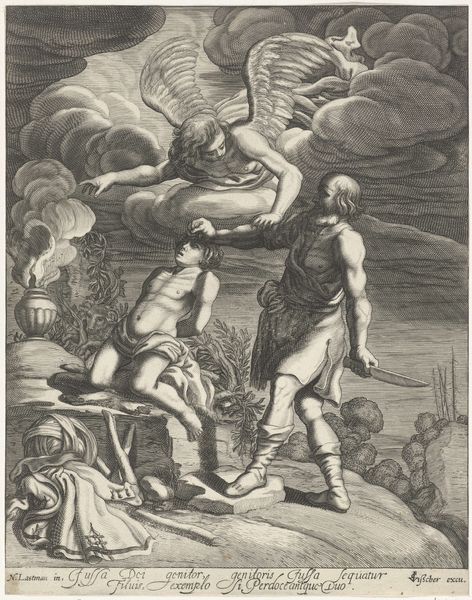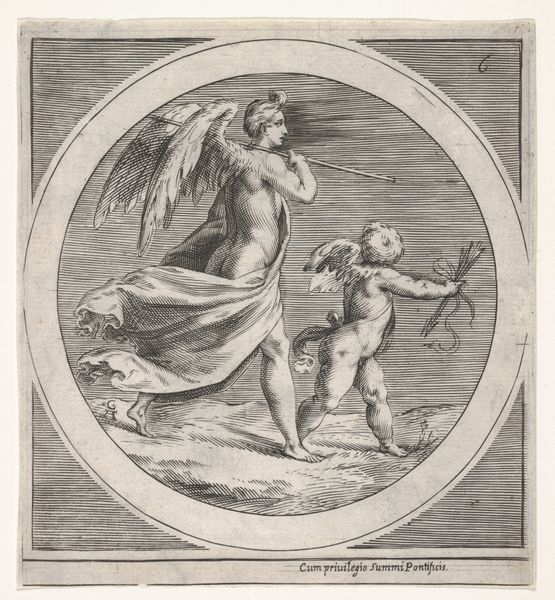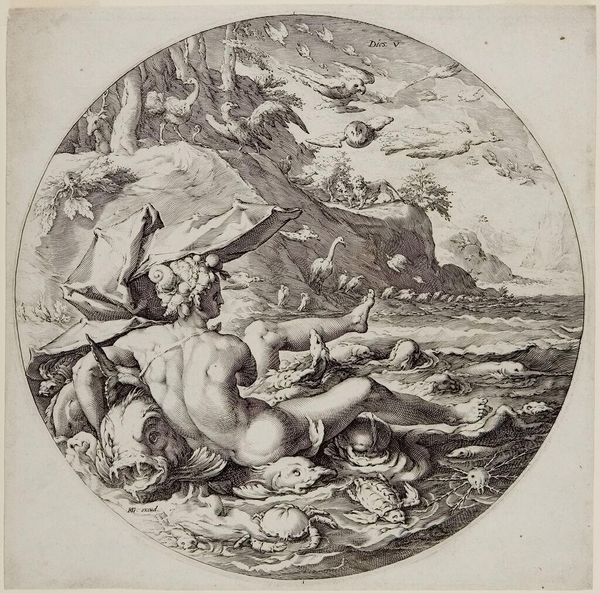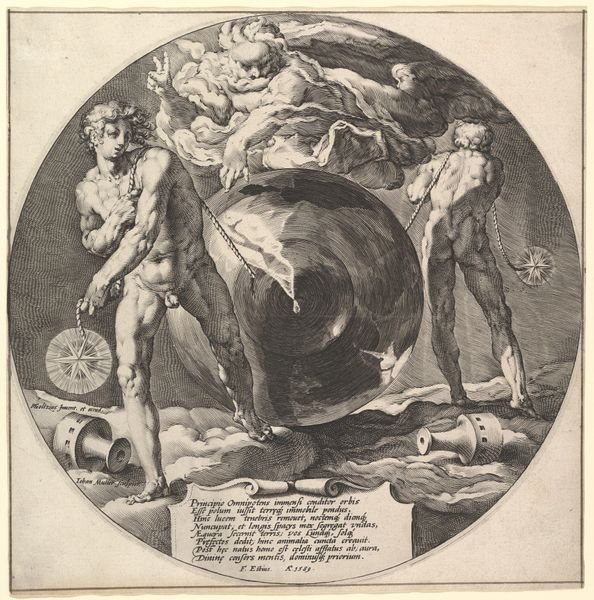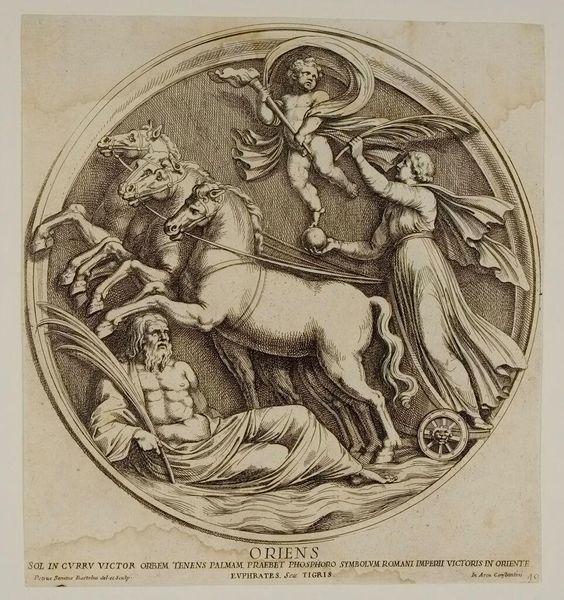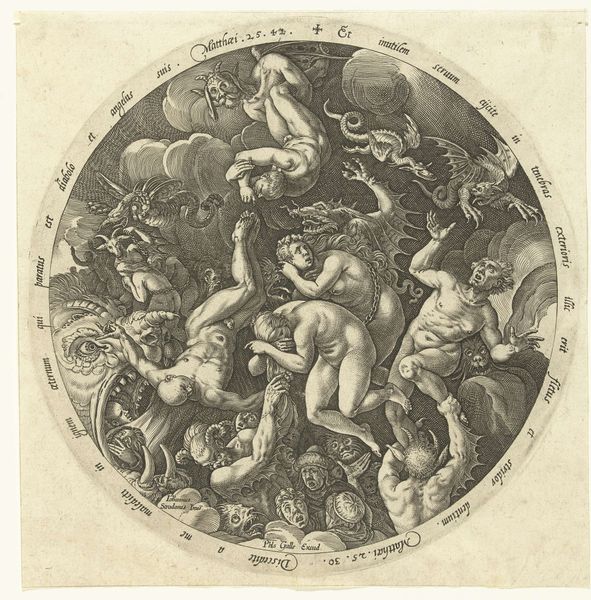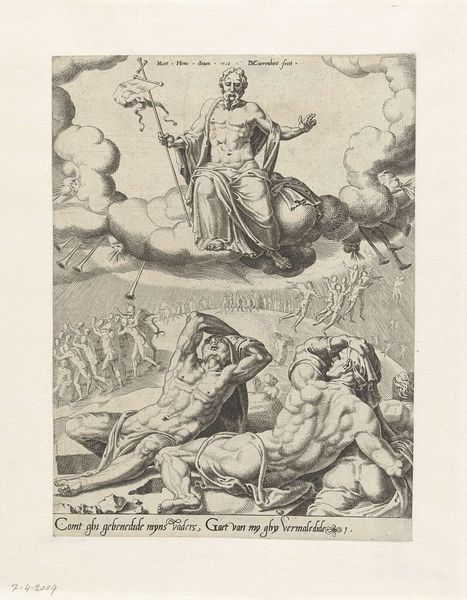
The Second Day (Dies II): The Division of the Waters, plate 2 from The Creation of the World, a series of seven plates 1589
0:00
0:00
drawing, print, engraving
#
drawing
#
allegory
# print
#
figuration
#
northern-renaissance
#
engraving
Dimensions: Plate (diameter): 10 5/16 in. (26.2 cm) Sheet: 10 1/2 × 10 1/2 in. (26.7 × 26.6 cm)
Copyright: Public Domain
Editor: Here we have Jan Muller’s engraving, "The Second Day (Dies II): The Division of the Waters," created in 1589. The composition, enclosed in a circle, depicts several nude figures in a rather dramatic scene. What is your interpretation of this piece? Curator: Well, let's consider the historical and social context. This engraving belongs to a series illustrating the Creation story. Muller, working within the Northern Renaissance tradition, presents a blend of Christian narrative and classical allegory. Think about the role of religious imagery during this period; how did prints like this function in disseminating religious ideas? Editor: So, it’s not just a literal depiction of the Bible, but also a statement on cultural values? Curator: Exactly. Notice how the figures are rendered with idealized bodies, echoing classical sculpture. This visual language, while celebrating divine creation, also reinforces existing social hierarchies and ideals of beauty. The "division of the waters" becomes not just a physical act, but a demonstration of power and order. Editor: The figure representing water looks a bit... defeated, almost? Curator: Precisely! The engraving arguably represents a taming of the natural world, a recurring theme in Renaissance art. The engraving speaks to the growing sense of control and mastery that was celebrated at this historical moment. How do you see this visual statement connecting with the historical circumstances that shaped its creation and its reception? Editor: I never considered the role of this kind of artwork in popularizing dominant narratives. I appreciate understanding it in the broader historical context. Curator: And I, you, have helped reveal the emotional and embodied responses art produces beyond ideological concerns, furthering our interpretation of it in modern times.
Comments
No comments
Be the first to comment and join the conversation on the ultimate creative platform.

